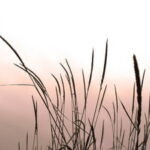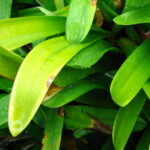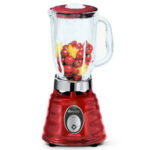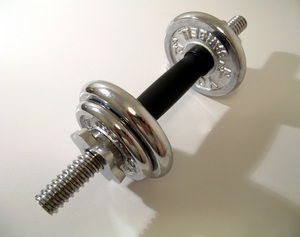Green flowers? Leaves are green, yes, and grass is green, but flowers? Yes, there are green flowers, a surprising variety of them, in fact. But “why”, you might ask, “‘would you want green flowers, when the garden already has so much of this color”?
Green flowers are unusual and, when displayed correctly, are “Oh, wow!” plants, making the viewer do a double take. That’s not really what you want in your garden? Well, they also make great ‘buffer’ and ‘blender’ plants. Green can be considered a neutral color in the garden, smoothing the transition between color schemes or diluting too strong a hue. Against yellow or red foliage they stand out without clashing. And they are great for cut flower arrangements. Need I say more?
If you’re not sure you like the green flower idea, start with some easy annuals. The zinnia “Envy” is a true, light green with a deeper center. Considered a ‘dahlia flowered’ type, it has the full, double heads but doesn’t grow as tall as the others in this class, stopping at about 2 to 2-1/2 feet. The newer “Benary’s Giant Lime” is taller, more disease resistant and blooms more, but is harder to find seeds for. Direct seed or transplant after ALL danger of frost is past, and it will reward you with flowers all summer. As cut flowers, they are very long lasting, sometimes lasting for two weeks in a vase with the water changed regularly.
Nicotiana langsdorfii is another easy green annual (who says it’s not easy being green?). A member of the tobacco family, this one, sadly, is not night scented but I forgive it because of its color. Short for a species flowering tobacco, coming to only about 2 feet, it has wands of little green bells that hang loosely. Turn them up and look inside and there are lovely light blue stamens! This is another plant that is good for cut flowers. There are also green flowered choices in the bedding nicotianas, with flowers that are held up so you can see their faces. A few have the extra bonus of scent!
Ammi visnaga- Green Mist Ammi- is related to Queen Anne’s Lace. It looks very similar, but rather than white, the flowers are a greenish white. The effect is subtle, making this a good plant to blend into and around others. While tall, it’s an open, ‘see through’ plant, softening edges and blurring things a bit. Also a good cut flower. Once you grow this plant, it will self seed it self for years to come.
The amaranth family provides us with two green flowering plants: the tall ‘Emerald Tassels’, 3 to 5 feet tall with long green tails; basically a green version of ‘Love Lies Bleeding. This plant makes quite a statement in the garden, standing behind other plants. It works wonderfully in fall arrangements. The shorter ‘Green Thumbs’ is a front of the border annual, holding its miniature flower spike upright.
Bupleurum ‘Green Gold’ looks like a euphorbia, but is a fast growing annual. The plant is erect with wiry stems; the leaves clasp the stem completely around. The chartreuse flowers grow up out of the junction between leaf and stem. These are cut for both fresh and dried use. The plant is quite happy growing in and around others, with its flowers peeking out here and there.
The one biennial on my ‘green sheet’ is the one most people think of first when they think of green flowers: Bells of Ireland. The tall spikes of bells, usually drooping at the top, make a big statement in garden or vase. I love this plant, but it can be tricky to germinate and hard to find transplants for. Place the seeds on the surface of some finely milled potting soil and hope for the best. Some years I get lots of plants, some years, none. But few other flowers say “Hey! I’m GREEN!” quite so effectively.
Got you hooked now? Okay, let’s move on to more permanent plants, starting with bulbs. There are a surprising number of green flowered bulbs, the showiest of which are the gladioli. There are a number of green ones, ranging from light chartreuse to medium true green, some with a darker throat. Of course, these have to be lifted each fall.
For a more effort free green flowered bulb, there are hardy spring bulbs. Parrot tulips are all splashed and streaked with green. Though none are pure green, they are streaked and splashed with white, pink, red, purple and yellow. They are the showiest tulips you can get!
For years, ‘Pistachio’ was the only green daffodil available (actually, it was yellow with a green tint), but now there is a treasure- ‘Sinopel’, which has a pure white perianth and a trumpet of fresh, spring green! If I wasn’t so tired of feeding bulbs to the gophers, I’d order a bundle of these. Daffodils increase each year, and even a few will slowly cover a good area, making them a great investment for your garden.
Then of course there are snowdrops (galanthus). ‘Flora Pleno’ blooms very early, with double green and white flowers. For some reason, the double versions are very aggressive spreaders, so don’t put them into a small, organized flower bed. Save them for a semi-wild area, such as a shady woodland, and they are wonderful.
While not precisely a bulb, the calla ‘Green Goddess’ is treated as a frost sensitive bulb. It is very green; so green, in fact, that the flowers blend into the leaves and don’t show up well. But as cut material they become the center of attention!
Now the perennials. I don’t know of any that are a vividly green colored as the annuals, but there are a number that have enough green to count. Hellebore comes first in the gardening year. Both H. foetidus and H. argutifolius have true green flowers. Other species of hellebore can also have green tinges to their white, red or pink flowers. Even though some are classed as zone 6, they have all succeeded up here in zone 4 for me. Tough plants with evergreen leaves, plant them by the door, where you won’t miss their late winter bloom.
The columbine family (aquilegia) offers 3 choices of green flowers. Aquilegia viridiflora is a short, 12″ variety with purple/brown bonnets clasped by yellow green spurs and it’s fragrant, an added bonus. The other two are tall- 3′- with the small ‘puff ball’ type of flowers rather than bonnets. “Irish Elegance” is white with green streaks on the backs of the petals, and sometimes green petal tips. “Nora Barlow” is the same type, but with pink streaks added to the mix. The amount of green in either of these seems to vary with the temperature. Columbines are hardy plants that can take almost any kind of soil and any amount of sun exposure. Basically, there are ‘can’t kill them’ plants!
Digitalis is a perennial foxglove with tall, long lasting spikes of small, yellowish green bells. This is a rather subtle plant, quietly graceful. I’ve had my main plant for ten years now, and it has neither died out in the center nor spread beyond its allotted area. A very polite sort.
Another demure one is heuchera cylindrical, either ‘Green Ivory’ or ‘Green Finch’ – I think these are both the same plant sold under different names, as I can’t tell them apart. These are coral bells without the coral or the bells. Unlike the common coral bell, the bloom stalks are tall (waist high) and thick. The hold a cylinder shaped spire of tiny, greenish white flowers, crammed tightly together. They bloom off and on all summer; each spike seems to last forever, and later spew out about 500, 000 seeds all over. Thankfully, they only sprout a very manageable number of babies!
Fancy Green, Daybreak Celebrity, Congratulations, Green Dragon, Green Moonbeam, Green Moth, Kalevala, Oso Green, Siloam Glory Land, and Verda Plata barely scratch the surface of the green flowers available in daylilies. There are even more yellow-green ones, and the majority of daylilies of any color have green throats. Many of the green or yellow-green ones exhibit what is known as ‘diamond dust’- a sparkle that looks like clear glitter when the sun hits it. Some of the yellow-green ones are fragrant. Daylilies, like the columbines, are nearly impossible to kill, thriving in poor, dry soils or deep loam. They even seem to survive some standing water, although this isn’t recommended. These are probably the showiest of the green flowered perennials.
The most unusual green flowering perennial would be Paris polyphylla. Somewhat hard to find, this Himalayan native stands 8″ tall and needs part shade. In spring, a single stem comes up from the soil, topped with whirls of leaves. In early summer, a six-pointed apple green star of a flower appears, with long, thin yellow anthers-longer than the green petals!- and a center of upright red stigma. Red berries in autumn complete the color display. Very tropical looking, but hardy to zone 5.
Rudbeckia ‘Green Wizard’ is a Black-Eyed Suzan with a difference. It has no petals, but has enlarged green sepals surrounding its tall black center. Spikey and alien looking, these flowers last a very long time when cut and are prized by flower arrangers. These are true perennials but not reliably harder in colder areas; I planted 4 plants 10 years ago and only one survived the first winter, but that one is still alive and going strong.
There are even woody plants with green flowers. In the early stages of its bloom, Hydrangea paniculata grandiflora (Pee Gee Hydrangea) has green blooms that slowly change to white and then pink. ‘Limelight’ holds his green color longer than the parent PG, and has a cleaner white stage. Sadly, while they make good cut flowers, I’ve not succeeded in drying them while they are in the green stage, only after they age to pink. I keep trying, though. There are a very few roses with greenish flowers- the miniature ‘Green Ice’ has wide open blooms that start white and age to light green, while ‘Greensleeves’, a floribunda, has flowers that are green, tan and pink all at the same time. They blooms have the texture of crepe paper, but sadly they drop their petals soon after opening. This one wasn’t quite hardy enough for my zone 4 garden and I lost it after 2 years, but it would be fine in any warmer areas. The ‘Green Rose’ doesn’t have green petals- or any petals at all. Like ‘Green Wizard’ rudbeckia, it has enlarged green sepals instead. It ‘flowers’ freely over a long period and is disease resistant. It is small enough to be grown in a large container, which is good for us up north, as it’s only hardy to zone 7. This one really looks like a set prop for Star Trek.
Green flowering plants can blend into almost any situation, but I have a couple of favorites. ‘Envy’ or ‘Giant Lime’ zinnias with orange or yellow calendulas (or marigolds or zinnias) make a great ‘citrus’ blend that is refreshing but bright, with a bit of a 1960s feel to it. Nicotiana langsdorfii teamed with pale blue pansies, deep blue bachelor’s buttons and white Swan River daisies is very cool and soothing, while N. langsdorfii behind black pansies creates a bit of a weird ‘witch garden’ effect. I also like columbines ‘Nora Barlow’ and ‘Irish Elegance’ with ‘Black Barlow’ columbine, a very dark maroon. Virtually all the green bloomers tend towards the yellow green, which makes me shy away from pairing them with pink, but this is strictly a personal bias. The non-yellow green ones, like Ammi, go very well with pink flowers. A big clump of green daylilies makes a good break between orange ones and purple ones. All the plants I’ve listed are easy to grow, so why not join the ‘green party’? s




